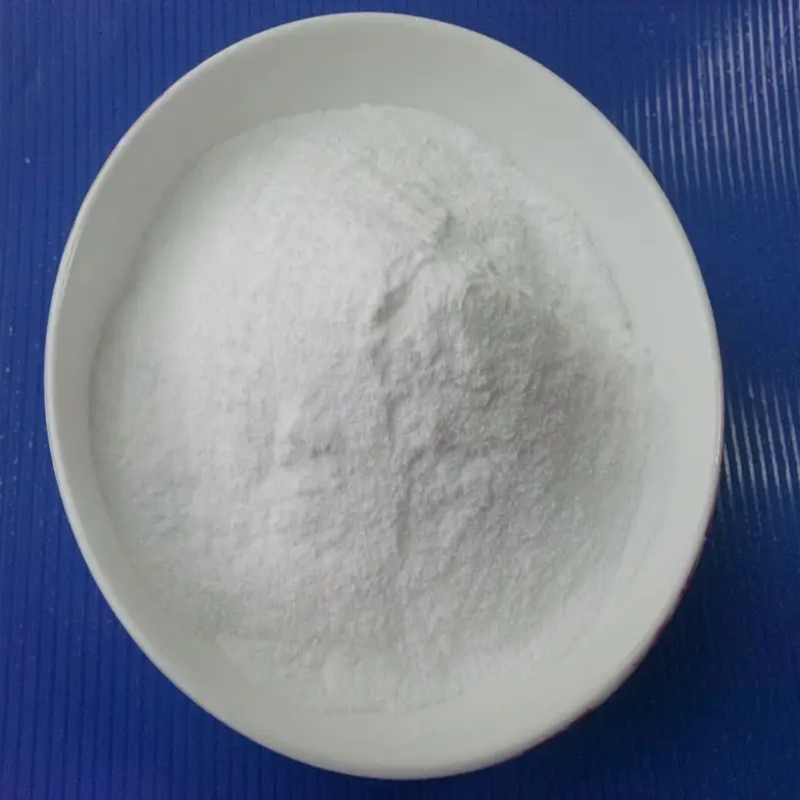-
Categories
-
Pharmaceutical Intermediates
-
Active Pharmaceutical Ingredients
-
Food Additives
- Industrial Coatings
- Agrochemicals
- Dyes and Pigments
- Surfactant
- Flavors and Fragrances
- Chemical Reagents
- Catalyst and Auxiliary
- Natural Products
- Inorganic Chemistry
-
Organic Chemistry
-
Biochemical Engineering
- Analytical Chemistry
- Cosmetic Ingredient
-
Pharmaceutical Intermediates
Promotion
ECHEMI Mall
Wholesale
Weekly Price
Exhibition
News
-
Trade Service
It turns out that Xiaocao is never alone.
The wind blows it into the arms of friends.
From spring to summer, from autumn to winter, it has never been knocked down by fate
.
Have you ever listened to your heartbeat, the signal of your life, it is always racing against time, every day and night, you see the haze is being driven away, the sun shines through the clouds, countless people smile bravely, firmly believe that tomorrow will be more Good
.
—— Selected from the song "Grass" This song "Grass" is a song sung by CCTV Boys (Kang Hui, Sa Beining, Zhu Guangquan, Xiao Ni), Chen Guoyi and others
.
It moved countless people in a CCTV TV program last year .
Chen Guoyi, a Chinese child star known as a wheelchair boy, was born in Guangzhou, China in 2010.
He is good at dubbing, singing, and Go.
When he was 16 months old, he was diagnosed with spinal muscular atrophy (SMA); since 2018 Participated in the audition of the "Music Master Class" program, and stood out among more than 6,000 children across the country, and finally won the first place in the Guangdong division and the twelfth in the national division
.
In 2019, he officially became a contracted singer of Guangdong TV Station "The Most Beautiful Voice of Children"
.
His inspirational life has brought love and courage to life to tens of thousands of SMA patients and more than 20 million rare disease patients and their families in China
.
In this article, we walk into this rare disease: spinal muscular atrophy
.
Figure 1 Timeline of SMA Since Werdnig and Hofmann first reported on patients with spinal muscular atrophy in 1891 and 1893, the status of this rare disease of SMA has undergone considerable changes
.
The earliest severe infant disease is also called Werdnig-Hofmann disease
.
In the 1950s, Wolfhart, Fez, and Eliasson described a milder form of SMA: patients with mild SMA can maintain the ability to stand and walk and prolong survival
.
The main pathology of SMA is defined as anterior horn degeneration and severe muscle atrophy
.
In addition, the key clinical features of symmetrical and proximal weakness are emphasized, which mainly affect the axial, intercostal and bulbar muscle tissue
.
Mechanism studies have shown that this disease is caused by mutations in the body.
The normal SMN1 gene encodes motor neuron survival protein (SMN protein), which is necessary for nerve and motor functions
.
The mutated SMN1 gene prevents the body from producing normal SMN protein, leading to skeletal muscle atrophy, which further affects the movement, swallowing and breathing ability of SMA patients
.
The related gene SMN2 also encodes the SMN protein, but a synonymous point mutation results in pre-mRNA splicing, and the probability of skipping exon 7 is about 90%, resulting in the generated transcripts that are easily degraded and most of them are unstable.
Truncated protein"
.
(See Figure 2) Figure 2 Schematic diagram of human SMN2 and SMN1 genes.
SMN2 copy number is often negatively correlated with the severity of SMA, which can predict the phenotype of SMA to a certain extent.
Most SMA type 1 has 1 or 2 copies, 2 Type 3 usually has 3 copies, type 3 often has 3 or 4 copies, and 0 copy appears in type 0
.
Clinically, SMA is divided into 4 types
.
① Type Ⅰ, the most common type, onset when less than 6 months old, manifested as unable to sit alone, and unable to support one's head due to severe hypotonia and symmetrical muscle weakness, usually died of aspiration pneumonia within 2 years of age , Is a severe type
.
In recent years, with the improvement of the respiratory disease management system and supportive therapy, the average survival time of type I patients has been significantly improved, but there has been no substantial improvement in the muscle strength of patients
.
② Type Ⅱ, onset at 6 to 18 months, manifested as being able to sit alone but unable to walk independently, accompanied by joint contractures and kyphosis.
As the disease progresses, a ventilator is required to maintain breathing, and it can often survive beyond 4 years of age
.
③ Type Ⅲ, onset at >18 months, able to sit and walk independently, survival is basically unaffected, wheelchair or walking, accompanied by scoliosis and osteoporosis, is mild, and can often survive to adulthood
.
④ Type Ⅳ, onset at >30 years old, able to sit and walk independently, without symptoms of digestive system and respiratory system, adult type
.
In addition to this, there is an uncommon type that occurs in the uterus and is manifested as reduced fetal movement.
If no treatment is taken, it often dies within 1 year of age.
It is the most serious type, called SMA 0
.
Figure 3 Classification of spinal muscular atrophy (SMA).
There have been many reviews and reports on the treatment of SMA.
The author will briefly introduce it based on the 2020 Journal of Neuromuscular Diseases 7 (2020) 1-13 and other reviews.
.
Although SMA is a single-gene neuromuscular disease, its phenotype is very complex and is usually considered a systemic disease.
Therefore, caring for SMA patients requires a wide range of respiratory, nutritional and gastroenterology, orthopedics, and psychosocial issues.
Subject management
.
General treatment can refer to the first consensus statement on the standard of care for SMA in 2007
.
However, the implementation of care standards is highly variable and is affected by cultural perspectives, socioeconomic factors, and the availability of regional resources
.
In the past few decades, several compounds have been studied in randomized controlled trials, including hyperacetylating agents such as valproic acid or phenylbutyric acid, anabolic agents such as salbutamol, methods to increase muscle strength and function, Thyroid-stimulating hormone releasing hormone or growth hormone and neuroprotective agents such as gabapentin, riluzole, and oresoxime
.
Although the results for the primary endpoint were negative, these studies validated the results and obtained critical information about the trial design and the feasibility of patient recruitment
.
The actual treatment can be subdivided into SMN2 splicing modification, SMN1 gene replacement therapy or treatment to promote muscle growth
.
Figure 4 summarizes the treatment methods discussed in the following sections and illustrates the role of their respective molecular mechanisms; Figure 6 shows the development status of related therapeutic drugs and clinical drugs
.
Figure 4 The treatment of SMA involves the molecular mechanism of action.
At present, the research hotspots on the treatment strategy of spinal muscular atrophy mainly focus on the following aspects
.
(1) Act on the transcription and splicing process of SMN2 gene: regulate the transcription and splicing process of SMN2 gene through antisense oligonucleotides (ASO) or other oral small molecule drugs (RG7916, LMI070), and promote the synthesis of complete full-length SMN protein.
2) SMN1 gene replacement therapy: SMN1 gene replacement therapy mediated by adeno-associated virus (AAV) to correct SMN1 gene defects
.
(3) Other treatment methods: neuroprotective drugs, small molecule drugs that target muscles, stem cell transplantation treatment, etc.
; SMN2 splicing modification: In December 2016, Spinraza became the first FDA approved drug for the treatment of SMA (previously used Name IONIS-SMNRX, trade name Spinraza), it will be launched in China in February 2019 (namely, Nosinagen Sodium Injection, 700,000 per injection in China, the price will be adjusted to 550,000 per injection after 2021)
.
It is an antisense oligonucleotide (ASO).
ASO is a synthetic short-stranded nucleic acid sequence with a length of 8 ~ 50 bp, which can be selectively combined with messenger RNA (mRNA) to affect the initiation or change of RNA translation Exon splicing
.
Spinraza is a modified ASO that specifically recognizes the SMN2 gene intron 7 splicing silencer N1 sequence (ISS-N1), and regulates the splicing of SMN2 pre-mRNA transcripts by blocking the negative regulatory site pathway , To increase the translation and splicing of SMN2 gene exon 7 and up-regulate the expression of SMN protein
.
Both in vitro experiments and animal experiments have confirmed that Spinraza can up-regulate the expression level of full-length SMN protein
.
Because antisense oligonucleotides do not easily penetrate the blood-brain barrier, they can only be administered intrathecally; in the United States, this therapy costs US$125,000 per injection and must be intrathecally injected throughout the life; drug treatment starts in 2 months For the 4 loading doses, each injection needs to be maintained for 4 months
.
Calculated at US$125,000 per injection, the recommended total of 6-7 injections in the first year is US$750,000 to US$875,000, excluding hospitalization expenses
.
Spinraza is hailed as "very effective", and its two inventors won a $3 million "breakthrough award
.
"
Small molecule splicing modifier Evrysdi (risdiplam): On August 7, 2020, the FDA approved Genentech’s Evrysdi for the treatment of spinal muscular atrophy in children aged 2 months and older
.
Evrysdi is in a liquid state and is administered by mouth or nasogastric tube once a day.
It is the first SMA therapy that can be used at home
.
When approving Evrysdi, the FDA adopted fast-track approval and priority review procedures, and granted it the status of an orphan drug.
The price of the drug in the United States needs to refer to the patient's weight, and the annual treatment cost is about 2.
37 million yuan
.
It will be launched in China on June 17, 2021.
In August, Roche risporan oral solution powder (Aimanxin) was approved for SMA for patients aged 2 months and above.
The retail price of 60mg/bottle is 63,800 yuan
.
Clinical trial data show that it is effective for infantile-onset SMA and later-onset SMA
.
As can be seen from the molecular mechanism of action in Figure 4, although both small molecules and ASO can be used as splicing modifiers, the sites of action are different.
ASO (Spinraza) binds to the single-stranded pre in the downstream of exon 7 of SMN2.
-On mRNA, small molecules act upstream
.
For the discovery and modification process of this small molecule splicing modifier, please refer to a 2018 JMC (doi: 10.
1021/acs.
jmedchem.
8b00741.
)
.
Risdiplam is a small molecule drug that fully complies with Lipinskiʹs rule of 5 and has excellent physical and chemical properties; the coumarin skeleton initially screened out was positive in the Ames test, and both coumarin and isocoumarin are in plasma protein Unstable
.
The compound risdiplam, obtained through skeleton transition and a large number of SAR studies, can enter the brain and has good oral bioavailability
.
(Figure 5) Figure 5 Small molecule splicing agent risdiplamSMN1 gene replacement therapy: Gene replacement therapy is to introduce foreign genes into the host through viral vectors, so that the foreign genes can express the target protein in the host cells
.
Adeno-associated virus vector is a small non-pathogenic virus that targets motor neurons and astrocytes to effectively infect the entire central nervous system.
Among them, self-complementary adeno-associated virus 9 (scAAV9) can penetrate the blood brain The barrier is introduced into the host by intravenous injection or intrathecal injection, and does not integrate into the host genome
.
At present, there is no literature report on human diseases caused by adeno-associated virus vectors, so the safety is relatively high
.
Theoretically, SMN1 gene replacement therapy mediated by scAAV9 is one of the most reasonable and effective methods for the treatment of spinal muscular atrophy.
Its advantage lies in the clinical efficacy of only a single intravenous injection
.
Novartis’ Zolgensma is one such drug, which delivers copies of the SMN1 gene to muscle cells so that the SMN protein can be produced
.
The defective gene of SMN1 has not been removed and may continue to be transcribed, producing unknown downstream effects
.
Zolgensma can cross the blood-brain barrier, avoiding intrathecal injections
.
In the United States, Zolgensma is currently the most expensive one-time treatment drug on the market, at US$2.
125 million per injection
.
Zolgensma is known as a "life-saving medicine" and "cure medicine", and the FDA listed it as a breakthrough therapy in the early stages of its development
.
However, such an expensive price makes people forget the benefits shown in the FDA documents
.
Figure 6 Representative drugs for the treatment of SMA (RG7916 has been marketed) and clinical research drugs The above are three modified treatment drugs for SMA approved internationally
.
In addition, it can also protect motor neurons and downstream muscle function through other ways to maintain the patient's motor function
.
Drugs such as muscle activating drugs and neuroprotective drugs do not rely on the increase of SMN protein expression levels, and can be combined with the above-mentioned specific treatment programs to play a certain auxiliary role
.
For example, the muscle activating drug Reldesemtiv (CK-2127107) is currently in phase II clinical indication for SMA; the neuroprotective drug Olesoxime (TRO19622) is a cholesterol compound, and the current clinical status of the indication for SMA shows Discontinued; in addition, there are some clinical treatments under study The drugs for SMA are shown in Figure 6
.
Expect more and more affordable drugs to be approved, giving SMA patients more choices
.
Columnist: Xingxinghu medicinal chemistry background, has been engaged in target research, patent analysis and breakthroughs, and improved new drugs; now focuses on the molecular design of innovative drugs; loves the pharmaceutical industry, and is willing to learn from each other, make progress, and witness innovative drugs The best times
.
References: 1, David C.
Schorling et al.
Advances in Treatment of Spinal Muscular Atrophy-New Phenotypes, New Challenges, New Implications for Care; Journal of Neuromuscular Diseases 7 (2020) 1–13.
2, Jonathan J.
Darrow; Monica Sharmaet al.
Efficacy and costs of spinal muscular atrophy drugs, Sci.
Transl.
Med.
12, 9648 (2020).
3, Vamshi K.
Rao et al; Gene Therapy for Spinal Muscular Atrophy: An Emerging Treatment Option for a Devastating Disease; J Manag Care Spec Pharm.
2018;24(12-a):S3-S16
.
4.
Sithara Ramdas et al; New treatments in spinal muscular atrophy: an overview of currently available data; DOI: 10.
1080/14656566.
2019.
1704732
.
5.
Sonia Messina et al; New Treatments in Spinal Muscular Atrophy: Positive Results and New Challenges; doi:10.
3390/jcm9072222
.
6, EVELINE S.
ARNOLD et al; Chapter 38 Spinal muscular atrophy; Handbook of Clinical Neurology, Vol.
148 (3rd series) Neurogenetics, Part II
.
7.
Zhang Lei et al.
; Research progress in genetics and treatment of spinal muscular atrophy; Journal of Clinical Pediatrics Vol.
35, Issue 8, August 2017; doi:10.
3969/j.
issn.
1000-3606.
2017.
08.
018
.
8.
Li Jing Zhang Cheng; Progress in clinical research on treatment of spinal muscular atrophy; Chinese Journal of Modern Neurological Diseases, June 2019, Volume 19, Issue 6; doi: 10.
3969/j.
issn.
1672-6731.
2019.
06.
003
.
9.
PSM Drug Shield Public Welfare Account: Liu Xinzhu; there is a kind of weakness called SMA, although it is rare, it can be diagnosed, treated, screened and prevented! 10.
Refer to the Yaodu database; Yaodu APP "points new game method" company enjoys the over-value access to the database.
Cytiva provides an overall solution for the Dingkang Bio-GMP-2 expansion project.
In-depth analysis of Hengrui innovative drug design cases, explores "Yao Mao" "The road to Nuggets, Liantuo Bio will be listed in the United States, valued at 1.
8 billion US dollars, can it reproduce Genting Xinyao's "License-in" legend? Click "Read the original text" to keep abreast of industry trends







